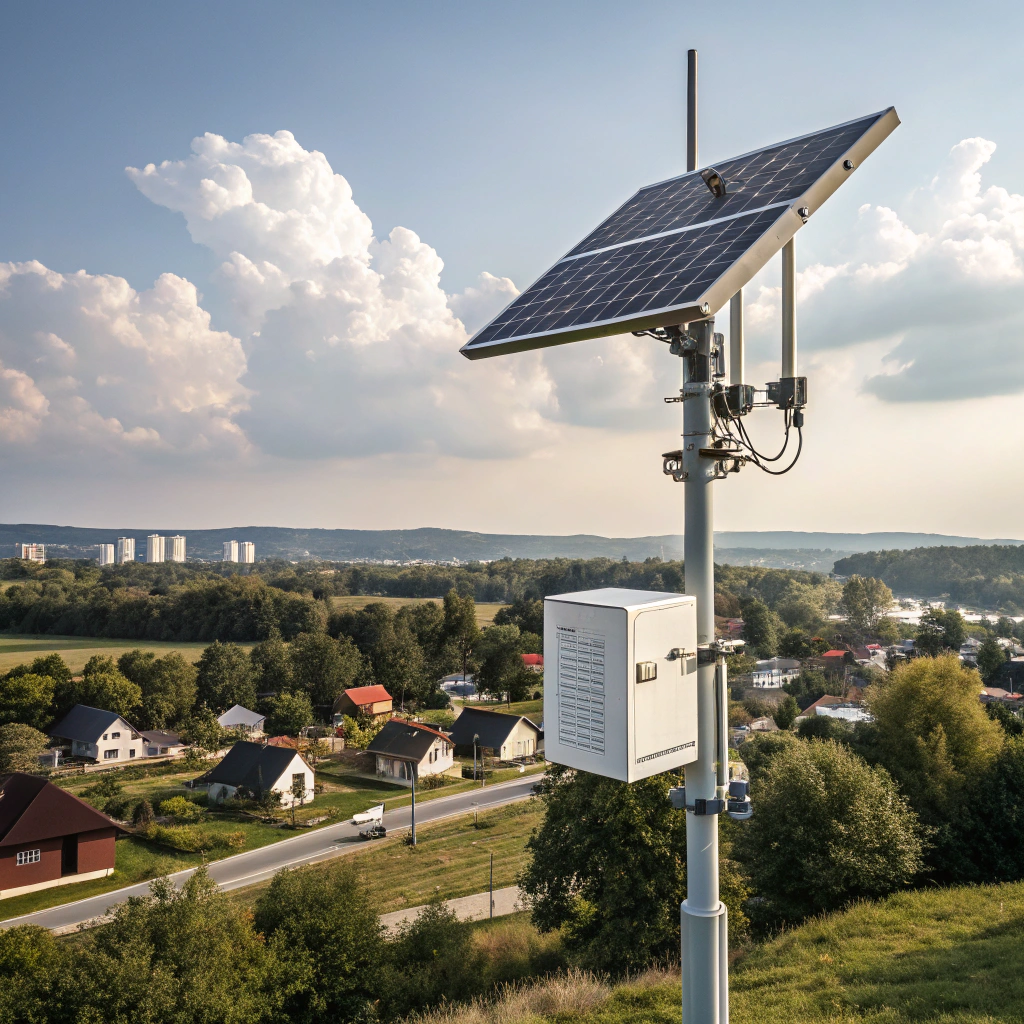Solar-powered WiFi base stations: a green solution for network coverage in remote areas?
•
Solar-powered WiFi base stations[^1]: a green solution for network coverage in remote areas?
Struggling with unreliable internet in remote locations? Solar-powered WiFi base stations[^1] offer a sustainable, off-grid solution to bridge the digital divide.
Solar-powered WiFi base stations[^1] provide uninterrupted connectivity in remote areas using renewable energy[^2], eliminating grid dependency while reducing carbon footprint and operational costs.

Imagine a world where mountainous villages and isolated farms enjoy the same reliable internet as urban centers. This isn't futuristic—it's achievable today with solar WiFi technology. Let’s explore how.
Why choose solar-powered WiFi base stations? Energy-saving and sustainable advantages
What if your network infrastructure could pay for itself through energy savings while protecting the environment?
Solar WiFi stations cut energy costs by 100%, operate emission-free, and require no fuel transportation—making them ideal for eco-conscious deployments in off-grid areas.
Breaking down the benefits
| Advantage | Impact |
|---|---|
| Zero electricity bills | Harnesses sunlight, eliminating grid power costs |
| Low maintenance | No moving parts; just periodic panel cleaning |
| Scalable | Modular design allows easy capacity expansion |
| Disaster-resilient | Functions during power outages and fuel shortages |
Critical considerations:
- Battery technology - Lithium-ion batteries now offer 5,000+ charge cycles (10-15 year lifespan)
- Smart energy management - Advanced controllers prioritize WiFi operation during cloudy days
- Hybrid options - Some systems integrate wind or diesel backup for extreme conditions
The International Renewable Energy Agency reports solar-powered telecom solutions can reduce CO₂ emissions by 85% compared to diesel generators.
Application scenarios in remote rural areas and mountainous regions: dual protection for energy and networks
How can communities beyond the grid maintain connectivity during storms, floods, or financial constraints?
Solar WiFi stations excel where traditional infrastructure fails—providing reliable service in disaster-prone regions while overcoming terrain and accessibility challenges.
Real-world implementations
Case Study 1: Peruvian Andes
- Altitude: 4,200m
- Solution: 800W solar array + mesh networking
- Result: 15 villages gained telehealth and education access
Case Study 2: Indonesian Archipelago
- Challenge: Frequent typhoons
- Innovation: Storm-resistant mounting + 3-day battery backup
- Outcome: Uninterrupted connectivity during 2023 cyclone season
Deployment checklist:
✔ Conduct solar irradiance mapping
✔ Calculate peak usage vs. generation capacity
✔ Implement lightning protection
✔ Train local maintenance crews
From installation to maintenance: a practical guide to solar-powered WiFi base stations
Want to deploy solar WiFi but worried about technical complexities? The process is simpler than you think.
Successful solar WiFi installation involves site assessment[^3], proper component sizing, weatherproofing, and remote monitoring—typically achieving ROI within 3-5 years.
Step-by-step deployment
-
Site Survey
- Sunlight exposure analysis (tools like SolarGIS)
- Terrain assessment for tower placement
-
System Sizing
- Daily energy requirement:
(Router watts × 24h) + 30% buffer - Panel calculation:
Daily needs ÷ (peak sun hours × 0.8 efficiency)
- Daily energy requirement:
-
Installation
- Best practices:
- 30° panel tilt at equator-facing direction
- Battery temperature regulation
- Surge protection on all cables
- Best practices:
-
Ongoing Maintenance
- Remote monitoring via IoT platforms
- Biannual panel cleaning
- Annual battery health checks
Pro Tip: New AI-powered predictive maintenance[^4] tools can alert you about shading issues or component degradation before service interruptions occur.
Conclusion
Solar-powered WiFi base stations[^1] deliver sustainable, cost-effective connectivity to underserved areas—turning sunlight into opportunity while protecting our planet.
[^1]: Explore the advantages of solar-powered WiFi base stations for sustainable connectivity.
[^2]: Learn how renewable energy sources enhance internet access in remote areas.
[^3]: Learn about the critical steps in assessing sites for effective solar WiFi deployment.
[^4]: Discover how AI can enhance the reliability and efficiency of solar WiFi installations.




